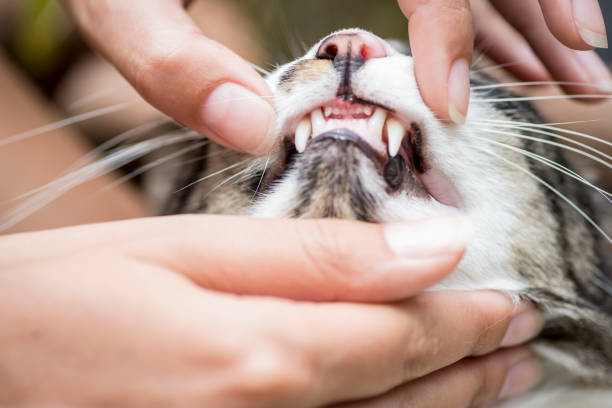Tooth resorption is a pathological condition affecting cats, leading to tooth loss, pain, and death. This condition is commonly seen in cats and is known as feline odontoclastic resorptive lesions or FORL. Understanding the potential impact of tooth resorption in cats is essential for pet owners to ensure their cats’ health and well-being.
What is Tooth Resorption?
Tooth resorption occurs when the hard tissue of a tooth, such as enamel or dentin, is broken down by cells called odontoclasts. This process can lead to holes in the teeth, causing them to become weak and brittle. As the condition progresses, the spots become more extensive, and the entire tooth may eventually be lost. Tooth resorption can occur both on the surface of the teeth (known as cervical line lesions) or beneath the gum line (known as apical lesions).
Causes of Tooth Resorption
The exact cause of tooth resorption in cats is unknown; however, there are several potential factors that have been identified as playing a role in its development. These include trauma or injury to the teeth, dental disease, viral infections such as feline herpesvirus, genetic factors, poor diet or nutrition, and changes in hormone levels.
Symptoms of Tooth Resorption
The most common symptom of tooth resorption in cats is pain or discomfort when eating or drinking. Other signs may include excessive drooling, difficulty chewing food, bad breath, red gums around affected teeth, bleeding from around impacted teeth, and weight loss due to lack of appetite. In advanced cases of tooth resorption, pus may be visible around affected teeth and infection may spread throughout the mouth.
Diagnosing Tooth Resorption
When diagnosing tooth resorption in cats, a thorough physical examination is essential. During this examination, your veterinarian will check your cat’s mouth for any signs of infection or lesions on the teeth and gums. X-rays may also be taken to get a better view of what’s going on inside your cat’s mouth. In some cases, biopsies may be taken from affected areas to confirm the diagnosis.
Treatment for Tooth Resorption
Treatment for tooth resorption depends on how advanced it is when it’s diagnosed. In mild cases, antibiotics may be prescribed to clear up any infection present before any other treatment can begin. In more severe cases, extractions may be needed to remove infected or weakened teeth; however, this should only be done if necessary, as it can cause additional trauma to your cat’s mouth if done incorrectly. After extractions, it’s recommended that your cat receive extra supportive care, such as antibiotics and pain medications depending on their individual needs.
Prevention of Tooth Resorption
To safeguard your cat against tooth resorptionThere are several things you can do at home:
- Provide regular dental checkups with your veterinarian.
- Brush your cat’s teeth regularly with appropriate toothpaste.
- Provide chew toys or treats specifically designed for dental health.
- Feed them a balanced diet low in sugar.
- Avoid exposing them to stressful situations.
- Reduce exposure to environmental toxins such as secondhand smoke or chemicals used in cleaning products.
Can Cats Die From Tooth Resorption?
While cats with advanced cases of tooth resorption can die from complications related to their condition (e.g., infection), this is not common nor likely given proper diagnosis and treatment from a knowledgeable veterinarian on time. Therefore, the best way for pet owners to prevent their cats from dying due to complications related to tooth resorption is by providing prompt attention when symptoms arise and seeking veterinary care right away if they suspect their cat has developed this condition.


Leave a Reply